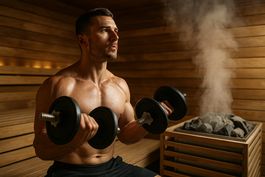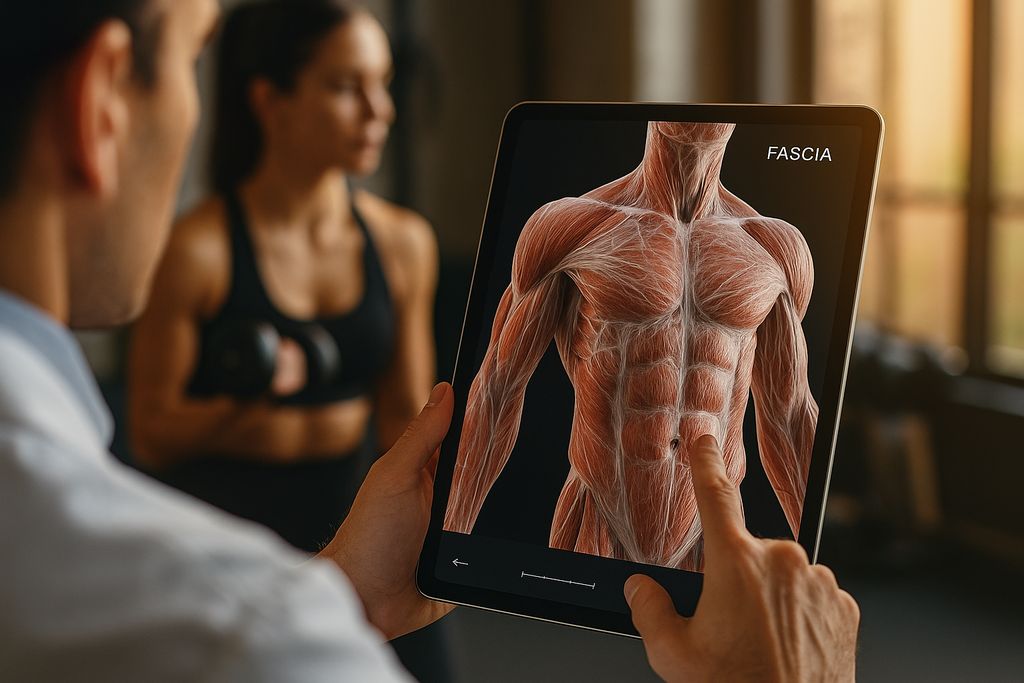Movement and Sauna: Releasing, Restoring, and Repatterning the Body
Movement and heat are not merely additive but synergistic modalities. Sauna heat enhances tissue elasticity, alters neuromuscular tone, and primes the autonomic nervous system for downregulation. When combined with structured movement practices, these changes accelerate fascial release, joint mobility, and emotional regulation. Modern research on thermotherapy, fascia, and exercise physiology suggests that movement in heat provides unique therapeutic benefits beyond those achieved by either practice alone.
Physiological Foundations of Movement in Heat
- Increased Circulation, Core temperature elevation during sauna induces vasodilation, improving oxygen and nutrient delivery to working muscles and connective tissue.
- Elasticity and Viscosity of Tissues, Collagen-based fascia exhibits thixotropic properties, becoming more fluid and pliable with heat. This lowers resistance to stretching and movement.
- Joint Mobility, Warmth reduces synovial fluid viscosity, improving lubrication of joints and extending safe range of motion.
- Neuromuscular Relaxation, Heat reduces alpha motor neuron activity, decreasing baseline muscle tone and guarding reflexes.
- Autonomic Nervous System Modulation, Sauna exposure enhances parasympathetic activity, reducing sympathetic dominance. Movement performed in this state supports trauma release and improved proprioception.
Movement Modalities in the Sauna
- Yoga, Heat amplifies the effects of asana by softening connective tissue, reducing stiffness, and enhancing proprioceptive awareness.
- Pilates and Core Conditioning, Heat-assisted neuromuscular activation enables gentle core strengthening with reduced strain, supporting postural correction and spinal alignment.
- Somatic Micro-Movements, Rocking, spiraling, tremoring, and pandiculation in a heated state modulate muscle spindle sensitivity, releasing chronic contractions and recalibrating motor patterns.
- Stretching and Mobility Training, Static stretching in heat lengthens tissues more effectively, while dynamic stretching enhances motor control and coordination.
- Calisthenics and Strength Conditioning, Modified bodyweight exercises performed in sauna amplify cardiovascular stress while reducing mechanical strain, offering a metabolic and neuromuscular challenge.
Neurological and Emotional Dimensions
- Pain Gate Modulation, Heat and movement both stimulate A-beta fibers, which can inhibit nociceptive signaling at the spinal cord level.
- Polyvagal Integration, Slow, intentional movement in parasympathetic-dominant heat states increases vagal tone, supporting resilience and emotional regulation.
- Trauma Release, Movement in heat allows the body to access stored defensive patterns, facilitating discharge through tremor, sighing, and movement expression.
- Neuroplasticity, Combined thermal and movement stimuli increase BDNF expression, supporting learning and motor pattern repatterning.
- Theta State Facilitation, The monotony of heat plus rhythmic movement encourages theta-dominant EEG activity, creating conditions for memory reconsolidation and subconscious integration.
Practical Applications
- Rehabilitation and Recovery, Heat-augmented stretching and mobility reduce post-exercise soreness, accelerate collagen remodeling, and improve recovery of injured tissue.
- Stress and Emotional Regulation, Parasympathetic bias in heat plus gentle movement reduces cortisol, promotes oxytocin release, and supports emotional release.
- Athletic Performance Enhancement, Visualization combined with movement in heat trains neuromuscular efficiency, increases lactate threshold, and enhances tolerance for physiological stress.
- Daily Rituals for Mobility and Resilience, Short, structured practices (yin yoga, somatic rocking, breath-led stretching) in sauna environments can maintain fascial hydration and prevent stiffness.
Cultural and Historical Parallels
- Yogic Tapas and Ayurveda, In yogic philosophy, tapas (heat) is both a metaphor for discipline and a literal practice of generating inner heat through breath, posture, and concentration. Ayurveda prescribes svedana (sweating therapies) in conjunction with movement and massage to mobilize toxins, loosen fascia, and restore balance.
- Indigenous Sweat Lodges, Across Native American traditions, sweat lodges combined heat, breath, chanting, and often rhythmic movement within a confined environment. Participants reported altered states of consciousness, visions, and emotional purification.
- Nordic, Baltic, and Slavic Sauna Practices, Finnish sauna, Russian banya, and Baltic traditions have long combined passive heat with active interventions such as venik, rhythmic striking with birch or oak branches to mobilize fascia, stimulate circulation, and encourage cathartic release.
- East Asian Martial Traditions, Shaolin monks and martial artists practiced daoyin, breath-linked movement often performed in heated states, to strengthen connective tissue, enhance qi flow, and build resilience.
- Turkish Hammam and Roman Thermae, Bathing cultures combined heat, immersion, massage, and stretching. Roman thermae included progressive heat rooms paired with exercise and mobility drills, while hammam traditions integrated scrubbing and passive mobilization.
- Shamanic and Trance-Based Rituals, In cultures from Siberia to Africa, rhythmic drumming and dance performed in hot environments induced trance states, catharsis, and communal healing.
Research Gaps and Future Directions
Few studies examine how fascia-specific interventions behave under heat. Needed areas include, EEG studies of movement in heat, fascia-focused trials, and longitudinal trauma recovery protocols. Comparative research should evaluate movement alone, sauna alone, and combined protocols.
Conclusion
Movement in the sauna represents a biopsychosocial intervention, simultaneously altering physiology, neurochemistry, and emotional regulation. By harnessing the synergistic effects of heat and intentional movement, practitioners can achieve deeper release, accelerated recovery, and more profound integration.
References
- Schleip R, et al. Fascia is able to contract in a smooth muscle-like manner and thereby influence musculoskeletal mechanics. Proc Natl Acad Sci USA. 2006.
- Knight CA, Draper DO. Therapeutic modalities: The art and science. Lippincott Williams & Wilkins, 2013.
- Laukkanen JA, Kunutsor SK. Cardiovascular and other health benefits of sauna bathing. Mayo Clin Proc. 2018.
- van der Kolk B. The Body Keeps the Score. Viking, 2014.
- Berridge MJ. The physiology of body fluid homeostasis. J Physiol. 2012.
- Raison CL, et al. Effects of heat stress on the autonomic nervous system and immune function. Brain Behav Immun. 2015.
- Porges SW. The Polyvagal Theory. Norton, 2011.
You may also like

Fascia, Heat, and Healing: Sauna as a Therapeutic Tool for Connective Tissue and Emotional Release

